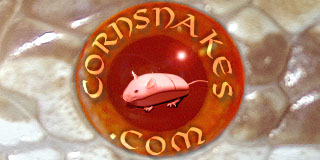-
Hello!
Either you have not registered on this site yet, or you are registered but have not logged in. In either case, you will not be able to use the full functionality of this site until you have registered, and then logged in after your registration has been approved.
Registration is FREE, so please register so you can participate instead of remaining a lurker....
Please be certain that the location field is correctly filled out when you register. All registrations that appear to be bogus will be rejected. Which means that if your location field does NOT match the actual location of your registration IP address, then your registration will be rejected.
Sorry about the strictness of this requirement, but it is necessary to block spammers and scammers at the door as much as possible.
You are using an out of date browser. It may not display this or other websites correctly.
You should upgrade or use an alternative browser.
You should upgrade or use an alternative browser.
Anery Kastanie 66% Lava, Amel
- Thread starter LRDJ
- Start date
5 Star Serpents
Ryan and Terri
Beautiful as usual Orlando! I really like the color along the neck, it looks more caramel-y than the typical yellow you see on "regular" Anerys
Mitchell Mulks
New member
Orlando, that's a very pretty snake. However, I'm going to play the Devil's advocate right now and say...how can you tell that they're kastanie? Just curious, as I'm red-green colorblind and the slight differences in color you're using to distinguish between a regular anery and one showing kastanie...I simply might not physically be able to see. Thanks!
Mitch
Mitch
LRDJ
New member
Orlando, that's a very pretty snake. However, I'm going to play the Devil's advocate right now and say...how can you tell that they're kastanie? Just curious, as I'm red-green colorblind and the slight differences in color you're using to distinguish between a regular anery and one showing kastanie...I simply might not physically be able to see. Thanks!
Mitch
Mitch,
You bring a good point....
how can you tell that they're kastanie?
I think it will be best for me to have a picture side by side from a few Anery siblings to note the difference or even better a bucket shot with a white background. As you know, when Kastanie cornsnakes are born they have a fair resemblance to an Anery Type A cornsnake. Not until a few sheds (For me I usually wait at least 3 -4 sheds) that we are able to tell the difference.
When Anery Type A & Anery Kastanie are mixed.....well is like opening a can of worms...... Again, it will be best to have a group shot to tell the difference but I look for a few markers. Also the fact that the snake gets even lighter with every shed (compare to the others) is good hint. Another indicator to look for is around the neck, lateral and slight ventral carotenoid (yellow pigment) coloration that tends to become more prominent. However, some Anery Type A develop similar phenotypic variation but the yellow tends to be subtle and lighter rather than the deep caramel-like coloration.
****If Tom is reading this....(If possible) I would be neat for him to post a picture of his Caramel Kastanie for comparison********

Yellow Arrow - Lighter coloration and continuos throughout the body.
Orange Arrow - Deeper grey fades away.
Red Arrow - Carotenoid coloration (Caramel-like) becomes prominent with every shed particularly in the proximal 1/3.
If we think that Anerythristic Kastanies are tough to see the effects of the gene when compare to an Anery Type A; then, imagine when the snow gene comes into place.
I planned on using this Adult male Anery (He could well be an Anery Kastanie as he came from a Kastanie breeding done by Don) to test him with a kastanie female to see if he is in fact an Anery Kastanie.

Take care!
Orlando
Palmetto Reptiles
Done here
Looks like you made your point, Orlando.
blichtenhan
New member
I can't wait to see him in 6 months or so, I really like these Kastanies, beautiful snakes!
snakepunk
New member
Since it varies so much with anerys, I'm not so sure that the carotenoid retention is a reliable method to ID anery + kastanies.
Because kastanie reduces the red pigment and anery removes it, I think a homozygous animal will look like a typical anery, much in the same way a hypo amel looks like a typical amel.
Because kastanie reduces the red pigment and anery removes it, I think a homozygous animal will look like a typical anery, much in the same way a hypo amel looks like a typical amel.



